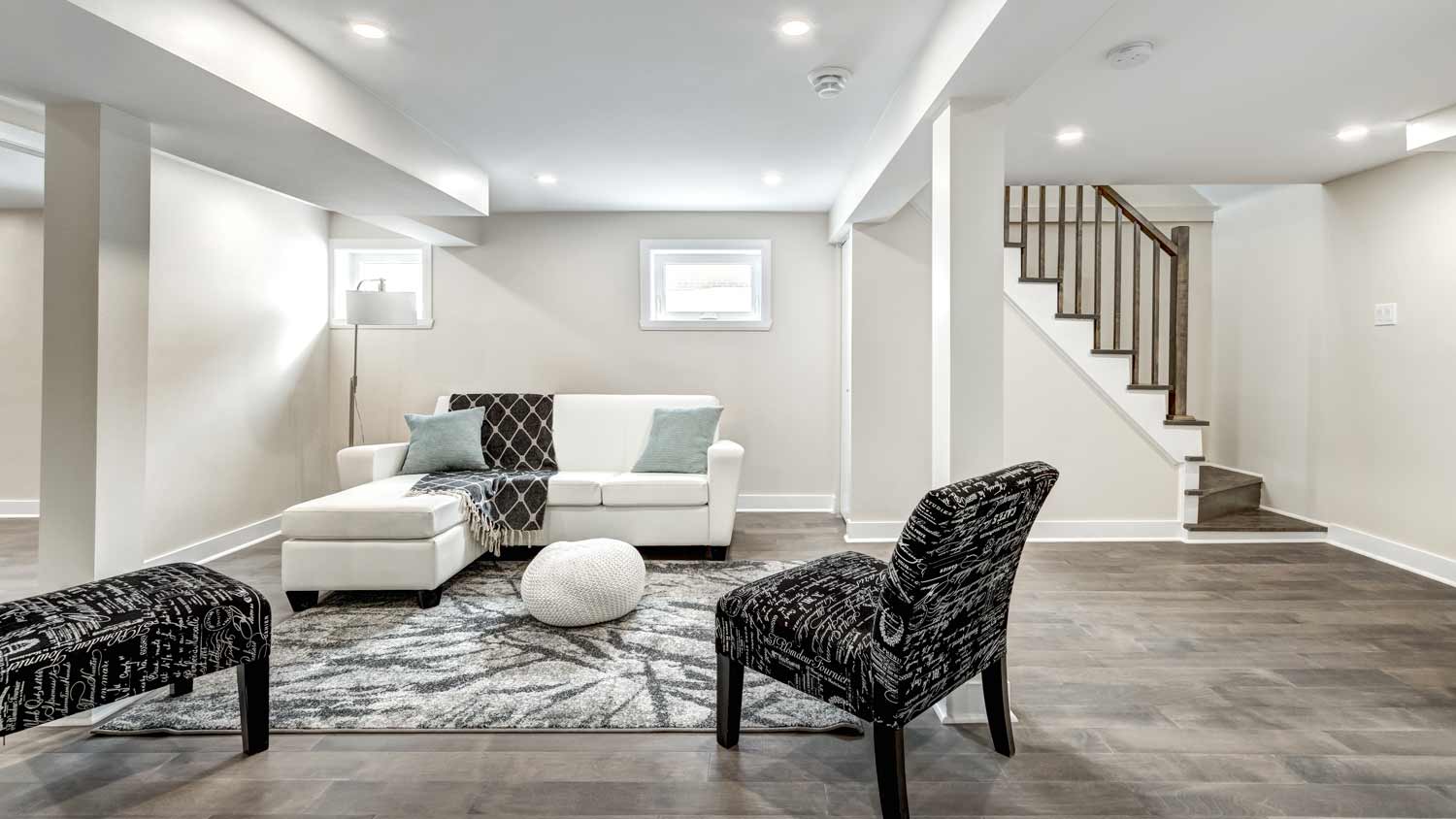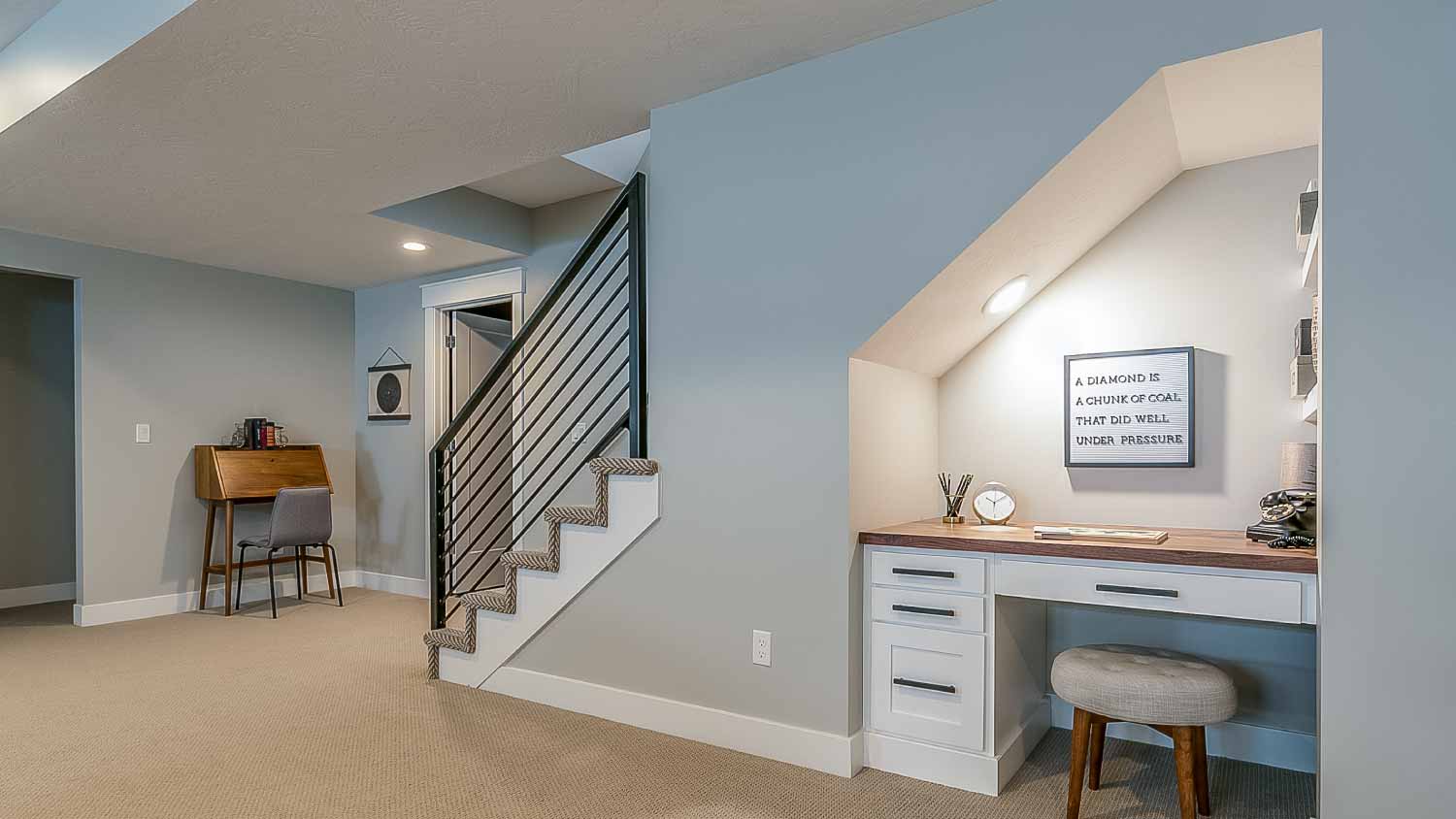
Walkout basements cost more to install than traditional basements. Our guide explores the factors that affect how much a walkout basement costs.
Bulkhead door replacement costs $1,750 on average, but it ranges between $500 and $3,000, depending on the material and the labor costs to hire a storm shelter pro.


Expect to pay $500 to $3,000 for bulkhead replacement, but most homeowners pay $1,750 on average.
Bulkhead door prices vary by material, with wood doors costing as little as $500 and fiberglass doors costing as much as $2,000.
Labor for bulkhead door replacement costs $400 to $1,000, depending on how complex the new door installation is.
You may need additional services to ensure proper fit and seal, including grading ($1 to $4 per square foot) and concrete removal, cutting, and pouring ($2 to $10 per square foot).
If your basement bulkhead is more of a floodgate than a fortress, it might be time for an upgrade. Bulkhead replacement costs range from $200 to $4,000, depending on the condition of the existing door and the material. On average, replacing a bulkhead costs $1,750, excluding installation and removal costs. A bulkhead, or cellar door, provides an entrance to a basement or a storm shelter if your area experiences extreme weather.
A faulty bulkhead door can result in water damage and inconvenient cleanups, so it’s essential to have a door that’s made of durable material, installed properly, and replaced promptly when its structural integrity weakens. This guide breaks down everything you need to know about the costs.
Your cellar deserves a water-tight door, and fortunately, replacing a bulkhead isn’t as expensive as a new installation. The process includes three separate tasks: removing the existing bulkhead door, choosing and installing a new door, and hauling away the old one. Each task carries its own price tag, although removal costs are in the quote you’ll get for the installation work.
Depending on the material, a new basement bulkhead door costs anywhere from $500 to $2,000 or more. You can find a wide range of styles at local big-box home improvement stores, most of which cost between $600 and $1,200.
Bulkhead doors have a concrete, rock, or brick casting to which the door attaches. Over time, the casting can break down and may need replacing along with the door. Demolition costs between $4 and $6 per square foot.
In some cases, you may need to grade and level to repair the foundation, which costs between $1 and $4 per square foot. Finally, pouring the new casting can cost between $4 and $8 per square foot.
Bulkhead installation costs and labor prices range from $400 to $1,000. If you’re replacing the old door with a closely matched new one, there isn’t likely to be additional buildup or concrete work to ensure a good fit. That means labor costs will be on the lower end of the average range. Hire a local storm shelter pro for the installation and removal work.
After installation, the old door and any associated debris will need to be hauled away. The total labor cost includes this step, but double-check before formally hiring a contractor to avoid any unpleasant surprises in the final invoice.
| Replacement Cost Factors | Average Cost |
|---|---|
| Bulkhead door | $500–$2,000 |
| Grading or leveling | $1–$4 per square foot |
| Demolition (for concrete removal) | $2–$4 per square foot |
| Cutting concrete | $2–$10 per square foot |
| Pouring concrete slab foundation | $3–$8 per square foot |
| Permits | $25–$400 |
If your contractor doesn’t include disposal fees in their estimate, you’ll have to pay these separately. Hauling and disposal fees vary but cost an average of $150 to $400. You can also rent a dumpster, take care of the hauling and disposal yourself, or hire a separate junk removal service to remove the old bulkhead and related debris.
As with most construction-related projects, the cost of bulkhead replacement depends on where you live. Labor rates are the biggest reason for this. Below is what you can expect to pay across the country.
| State | Average Cost |
|---|---|
| Arizona | $1,500–$3,200 |
| California | $1,800–$4,000 |
| Colorado | $1,400–$3,000 |
| Florida | $1,200–$2,800 |
| Georgia | $1,200–$2,800 |
| Illinois | $1,400–$3,200 |
| Indiana | $1,200–$2,700 |
| Louisiana | $1,300–$3,000 |
| Massachusetts | $1,500–$3,500 |
| Michigan | $1,100–$2,600 |
| Minnesota | $1,400–$3,000 |
| New York | $1,600–$3,800 |
| North Carolina | $1,200–$2,900 |
| Ohio | $1,200–$2,800 |
| Oregon | $1,600–$3,600 |
| Pennsylvania | $1,300–$3,000 |
| Tennessee | $1,200–$2,800 |
| Texas | $1,300–$2,900 |
| Virginia | $1,300–$3,000 |
| Washington | $1,700–$3,800 |
| Wisconsin | $1,300–$2,900 |
The cost of the basement bulkhead door will depend largely on the type of material used. Basement bulkhead doors come in wood, steel, plastic, or fiberglass. The labor costs to replace an existing door average 40% of the total cost and are substantially less than the cost of new construction, which includes excavation and concrete work.
| Bulkhead Door Material | Average Cost |
|---|---|
| Wood | $500–$1,500 |
| Steel | $900–$1,600 |
| Plastic | $1,200–$1,500 |
| Fiberglass | $1,000–$2,000 |
Traditional cellar bulkhead doors found on properties across the Midwest are made of wood. While they provide some measure of protection, wooden bulkhead doors can begin to rot over time, leading to the potential for significant weather damage or intrusion. You can expect to pay between $500 and $1,500 for pressure-treated wooden bulkhead replacement doors, with custom-built doors costing more.
If you’re installing a wooden door that will rest in a concrete or stone frame or brush up against a concrete platform, ensure that the wood portions are treated with a protective sealant. Acrylic stains require less maintenance than paint and will last longer without peeling.
Steel bulkhead doors can last for at least 20 years without risking significant rust damage. Their weight means that they offer superior protection, especially when combined with a heavy chain and padlock. The cost of steel bulkhead doors averages from $900 to $1,600, depending on the style and manufacturer.
Fiberglass basement bulkhead doors offer the strength of steel at a lighter weight. Their aesthetic is similar to traditional wood designs, which many people prefer. A fiberglass door offers a higher degree of protection from the elements without the risk of rust while also resisting age-related cracking or structural failure. Although some higher-end models cost more, fiberglass bulkhead doors range from $1,000 to $2,000.

If you’re fairly handy with carpentry projects, you might want to replace your basement bulkhead door yourself. Doing so can save you an average of 40% of your total costs to hire a professional.
However, the time involved can be significant, so reserve a full weekend for the project. If you can persuade a skilled friend to assist, you might be able to finish the work in a day. Bulkhead doors can be quite heavy, so you’ll need at least one helper to move and manipulate them into place.
To get the job done, have these tools on hand:
| Tools | Average Cost |
|---|---|
| A right-angle grinder and cutoff wheel | $26 for a four-hour rental or $65–$200 to purchase |
| Prybar | $10–$15 to purchase |
| Drill with a mixing paddle attachment | $18 for a four-hour rental or $65–$225 to purchase |
| Saw | $17 for a four-hour rental or $100–$250 to purchase |
If you don’t have the necessary tools and materials, you’ll need to purchase or rent them (or just hire a pro for the job).
Replacing a basement bulkhead door can potentially eat into a home improvement budget. However, there are a few ways you can save some money while completing this project.
To save money while replacing your home’s bulkhead door, start by comparison shopping for your new door. Door products are available at most large home improvement stores at various prices, so research your options carefully and compare costs from different retailers.
Bulkhead replacement will cost more if you need to replace the casting. Casting replacement may involve demolition, removal, leveling, grading, and pouring concrete. More complicated projects may also have an increased labor cost to accommodate the higher degree of skill required to complete the job. However, if the casting is in good shape and you’re only replacing the door, expect the costs to be on the lower end of the range.
Finally, consider doing the installation yourself if you have the requisite carpentry skills or want to attempt a full homemade storm shelter. You’ll still have to buy the door and materials, but you’ll save around 40% off the total price of having the work done professionally.
Home is the most important place on earth, which is why Angi has helped more than 150 million homeowners transform their houses into homes they adore. To help homeowners with their next project, Angi provides readers with the most accurate cost data and upholds strict editorial standards. We extensively research project costs to develop the pricing data you see, so you can make the best decisions for you and your home. We rely on reputable sources, including the U.S. Bureau of Labor Statistics, academic journals, market studies, and interviews with industry experts—all to ensure our prices reflect real-world projects.
Want to help us improve our cost data? Send us a recent project quote to [email protected]. Quotes and personal information will not be shared publicly.
From average costs to expert advice, get all the answers you need to get your job done.

Walkout basements cost more to install than traditional basements. Our guide explores the factors that affect how much a walkout basement costs.

Discover the cost to finish a basement laundry room. Learn about average prices, key cost factors, and tips to budget your basement laundry remodel.

The first step toward a cozy finished basement is adding its framing. How much does it cost to frame a basement? Let's break down the numbers.

Thinking of finishing your basement? Before you do, learn about when permits are required and what happens if you don’t get one before beginning construction.

Finishing your basement can be a time-intensive project. Our guide explores the best time to finish a basement and what time of year is best for this project.

Finishing a basement isn’t always ideal. Learn about the differences between a finished and unfinished basement and which is right for you.